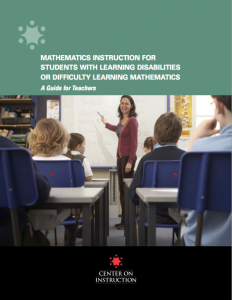 This three-part anticipation-reaction reading guide video series is developed by the Texas Adolescent Literacy Academies (TALA)/ Vaughn Gross Center for Reading and Language Arts. Teachers can use this series of classroom modeling to implement the before, during, and after reading strategies. This will enhance students’ understanding of the text in any content area. Proven by research, Science, Social Studies, History, and English Language Arts classrooms will benefit from this technique.
This three-part anticipation-reaction reading guide video series is developed by the Texas Adolescent Literacy Academies (TALA)/ Vaughn Gross Center for Reading and Language Arts. Teachers can use this series of classroom modeling to implement the before, during, and after reading strategies. This will enhance students’ understanding of the text in any content area. Proven by research, Science, Social Studies, History, and English Language Arts classrooms will benefit from this technique.
Anticipation-Reaction Before Reading
This video demonstrates how a social studies teacher uses the anticipation-reaction guide to activate prior knowledge. Before reading, students listen to or read several statements about key concepts. They are often structured as a series of statements with which the students can choose to agree or disagree. This guide stimulates students’ interest in a topic and set a purpose for reading.
Anticipation-Reaction During Reading
This video begins after students agree or disagree with key concept statements completed in the before reading steps. Students read the text, then look for evidence to confirm or change their opinions on the statements. The teacher asks students to share their evidence and their reasoning.
Anticipation-Reaction After Reading
This video begins after students find and record evidence that supports or challenges the statements. Students review their findings, then have the opportunity to change their opinion on each of the statements. In summary, the Anticipation Guide requires students to draw final conclusions about the text. The guide also provides students a visual reference of what they have read and learned.
 These content area lesson plans were created by the Center for Research on the Educational Achievement and Teaching of English Language Learners (CREATE Center). CREATE researchers developed curriculum to build the language and literacy skills of English learners in the middle grades while simultaneously instructing grade-level content concepts. Lesson plans and materials integrate instructional features of the Sheltered Instruction Observation Protocol (SIOP Model) including language objectives, explicit vocabulary instruction, student interaction, building background knowledge, and comprehensible input.
These content area lesson plans were created by the Center for Research on the Educational Achievement and Teaching of English Language Learners (CREATE Center). CREATE researchers developed curriculum to build the language and literacy skills of English learners in the middle grades while simultaneously instructing grade-level content concepts. Lesson plans and materials integrate instructional features of the Sheltered Instruction Observation Protocol (SIOP Model) including language objectives, explicit vocabulary instruction, student interaction, building background knowledge, and comprehensible input.